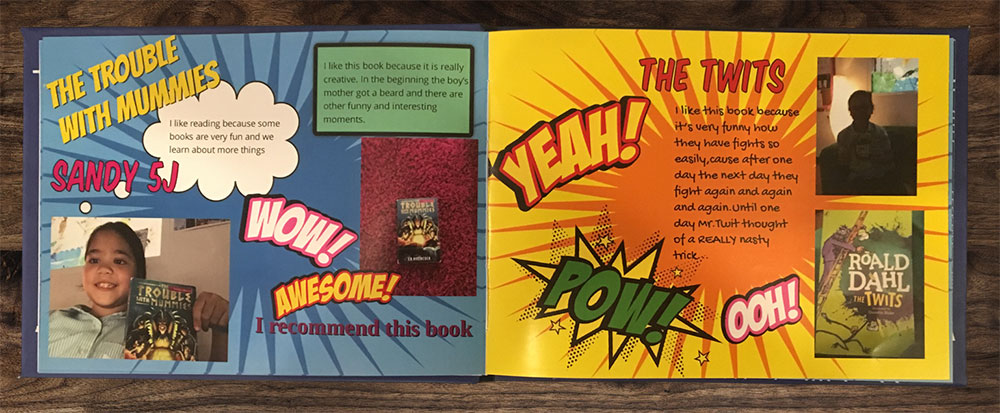Mandarin Chinese is a difficult subject to study. Could technology support these students in a positive way?
Every learner is an author! – a philosophy that has driven my journey and passion for using technology tools to transform learning and teaching in my class. It also reminds me to make sure that I provide opportunities for my students to create and publish their learning to an authentic and global audience.
I am the technology integration coach at Xavier School in the Philippines. My students, who are mostly of Chinese descent, tell me that Chinese Mandarin is one of the most difficult subjects to learn. For many, the first language at home is either English or Filipino (and most speak another Chinese dialect, Fookien).
Add to this the fact that writing Chinese characters and learning to speak the words requires intense practice and memorization, and you can see why it isn’t appealing to them.
In my role, the big challenge is to help teachers deliver their class and provide opportunities for struggling students, to lead them to appreciate what they are learning.
So to make this happen, I collaborated and teamed up with Laoshi (Teacher) Malinda Tan, a Chinese Mandarin language teacher who has been teaching for more than twenty years. Our approach would be to create an ebook that would demonstrate the learning of the students in 6H. Definitely, the tool for this is Book Creator.

Going back to the 5Ds framework
Students are asked to demonstrate their understanding of Chinese through speaking, writing, listening, and reading. In a class of forty students, providing quality formative feedback for this can be challenging and tiresome for the teacher.
Following the 5Ds Framework for Tech Integration (a concept I shared on this blog a while ago), Laoshi and I came up with a unit that integrates various iPad apps as they aimed to share about their parents, families, hobbies, and clothes. A summary of the lesson follows.
- Dip – Students thought of what they wanted to share about their parents, hobbies and clothes.
- Deepen – Students went through a vocabulary practice in order to learn how to write and read the new Chinese words. Aside from using their Chinese textbooks, the students also had vocabulary games using iPad apps such as Quizlet.
- Do – For their performance, the students created ebooks that contained details about them and their family. Since their lesson was about hobbies, clothes, and the work of their parents, they were expected to create short paragraphs or stories containing the words they learned.
- Discern – Feedback were given to students via formative activities such as practice quizzes. In order to prepare for the project, the laoshi also asked them to work on a draft that would guide them in creating their books. As the students created their book, laoshi and I went around the class giving feedback on how they could improve their work further.
- Distribute – Students worked on their ebooks with the goal that the best books would be published online via the iBooks Store.

Writing and speaking
Book Creator as an essential tool for creating the Chinese books. Since they were using Chinese Mandarin characters, the students had to make sure that the iPad’s Keyboard settings allowed Chinese character input. Drawing the characters on the iPad’s keyboard made the project easier for them.
Did you know you can also change the language of the Book Creator app too?
Laoshi wanted to go beyond writing of Chinese characters. She wanted them to speak the language, especially, since one Chinese word, when spoken, might have a different meaning depending on the tone of the speaker. To check this skill, the students were also asked to record themselves reading what they have written.
How to add an audio hotspot in Book Creator
To make their book more engaging and creative, the students added images that helped them express their thoughts. They were also in control of the layout and design of their book.
So, to make sure that they designed their books well, a short session on basic design principles was given to them. They were also reminded to use copyright free images from Pixabay.
9 design tips to give your book a professional finish
Adding the English translation was done outside their Chinese class since there was not enough time to add the text. This was also an extension activity of the main learning activity.

The end result
Since first using Book Creator, the students have been asking Laoshi Malinda Tan to use the app more regularly. She has become a model for other Chinese teachers as they try using Book Creator in their own classes. I have also featured the students’ work in an international global education conference and the participants felt inspired to do similar projects in their own class.
For educators teaching students various languages, creating a bilingual book is a wonderful project. More than testing mastery, bilingual books give the learners the chance to be creative and to express their ideas in various ways. Introducing a global audience makes the project more meaningful. Publishing their work online adds a personal feeling of success and achievement.

 Download the books
Download the books
These two books were selected for publishing to the iBooks Store.
Welcome to my Family by Haley Yap: https://itunes.apple.com/us/book/id1174287282
My Parents and I by Jae Cho: https://itunes.apple.com/us/book/id1174296657

Learning and reflection
Technology tools, such as Book Creator, can help students express or showcase their learning in various ways. Some students might not perform well when it comes to writing, but will do well when sharing their learning through speaking.
Accommodating these differences in class and giving them the proper tools enables a more conducive learning environment. This opens up more opportunities for students to be successful in what they are doing. Even my struggling students felt proud when they were able to see their finished project.
Telling the students that their book would be shared and published online for a global audience ignited their passion for doing the work.
When I told them about how my students last year became published authors and how one of their books (Friends), was a finalist in the 2016 iBooks Author Conference in Tennessee, this challenged them to make sure that their work was of high quality.
Francis Jim Tuscano is a Grade 6 teacher and technology integrator advocate at Xavier School, San Juan City, Philippines.
He teaches RE in the Catholic school, while co-heading the 1:1 iPad program committee. Jim is also a Book Creator Ambassador and ADE.

 Telling the students that their book would be shared and published online for a global audience ignited their passion for doing the work.
Telling the students that their book would be shared and published online for a global audience ignited their passion for doing the work.






